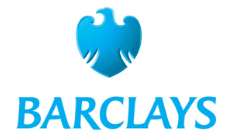Barclays child account review
Barclays offers a wide range of current accounts and savings accounts for children and teens, so you have a good chance of finding what you are looking for.


Introducing your kids to banking from an early age is a great way of teaching them how to save, manage their money and get organised. In a nutshell, it prepares them for adult life.
There are a lot of options out there, but choosing Barclays is a pretty safe bet, as it carries all the advantages of a big brand and also offers a good range of accounts for children and teens.
To make comparing even easier we came up with the Finder Score. Fees, features and customer service across 20+ of the most popular banks are all weighted and scaled to produce a score out of 10. The higher the score the better the account – simple.
Read the full methodologyThe first thing you need to figure out when picking a child account is whether you are looking for a prepaid card, a current account or a savings account. Current accounts and prepaid cards are for day-to-day spending, such as paying for the occasional ice cream with friends or for a new toy. Savings accounts are for, well, saving, usually for the medium-to-long term.
With Barclays, you have a couple of current account and savings account options to choose from, but no prepaid card. Specifically:
The main gap in Barclays’ child accounts offer is the lack of a prepaid card or current account for kids under 11. Prepaid cards usually have a monthly fee, have stricter parental controls and allow you to teach your kids about money from a very young age. If this is the type of product you are after, you can compare options on this page.
Depending on whether you already bank or not with Barclays, you can open an account in-branch or via video banking. More specifically:
All Barclays’ child accounts have no monthly fees. For the current accounts, debit card payments and cash withdrawals are also free.
The only thing you really need to worry about is the foreign transaction fee. If your child uses the card on a trip abroad, expect them to be charged for every transaction or cash withdrawal.
Barclays is a fully licensed bank, meaning that it’s regulated by the Financial Conduct Authority and deposits are protected by the FSCS.
Neither the children’s bank account nor the young person’s account offer overdrafts, so you don’t have to worry about your kid going into debt. However, unlike other cards, Barclays does not offer any particular parental controls, so you’ll mostly have to trust your child with the money if you let them use the card.
Pros
Cons
| Email support | |
|---|---|
| Telephone support | |
| In-app or live chat | |
| Contact form | |
| Branch support |
If a child’s bank account does not sound like the right idea, then there are other options available.
Barclays is a very solid option for kids’ and teens’ accounts, both in terms of savings accounts and current accounts. This is especially true if the parent or guardian already banks with Barclays, allowing them to sort everything out stress-free from home thanks to video banking.
Barclays’ child accounts are very straightforward and do what they say without much fuss. The lack of fees (for the most part) and dedicated app make them competitive for a traditional bank. However, the lack of parental control options might make them more suitable for older kids. In any case there are no current account options for under-11s.
Get started by visiting Bank of Barclays’s website and applying for an account. If you have read this review and decided that these accounts are not the right choice, you can also discover other bank accounts for children and the option of prepaid cards for kids.
New to nimbl? See if you can keep some more money in your pocket with our promo codes and special offers.
Support your child’s financial knowledge and teach them important real-life money skills in a safe and controlled way with a kids’ debit card.
We compare GoHenry and nimbl to see which could work better for you and your child.
We compare GoHenry and HyperJar Kids to see which could work better for you and your child.
If you are looking for a free prepaid card to teach your kids about finance while retaining full control, HyperJar is certainly a competitive option. Here’s how it works.
Digital challenger bank Starling has launched a new children’s app for its Kite debit card. This prepaid card for kids comes with parental controls and can be managed from the parent’s banking app.
We have a look at Revolut’s take on a child’s account, which comes with a prepaid debit card and its own app.
Don’t think gohenry is quite what you’re looking for? Here are some other money services for children that might be right for you.
Rooster Money offers a colourful app to teach your kids about budgeting and makes a valid alternative to the traditional children’s current account.
With nimbl, children as young as 6 can use a card and manage their money through an app. We cover how it works, the fees, and the pros and cons for parents.